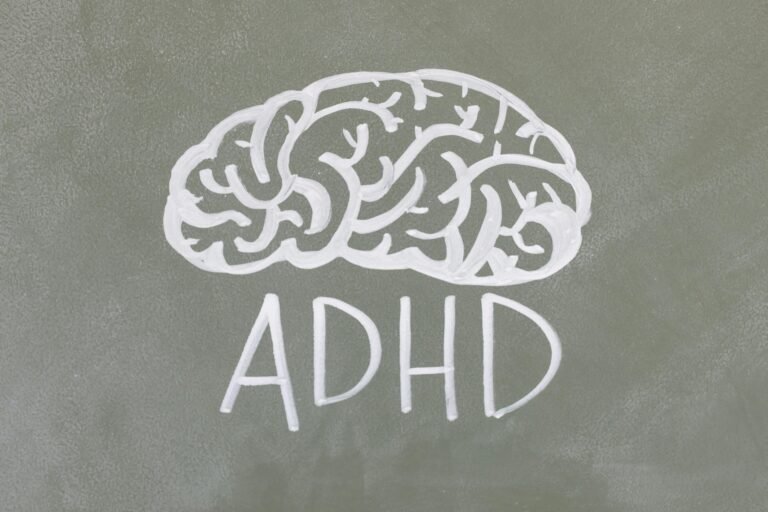Reading a book with ADHD can feel like a personal mission that gets derailed every five minutes. You start a chapter with good intentions, but then your eyes glaze over, your brain starts thinking about dinner, and you realize you’ve reread the same paragraph three times.
If this sounds familiar, you’re not alone. Reading is one of those things that seems simple but can be incredibly frustrating with an ADHD brain. It doesn’t mean you’re not smart or interested. It means your attention system works differently.
But that doesn’t mean books are off the table. You just need different tools and expectations.
Why Reading Is Hard With ADHD
Reading isn’t just about comprehension. It requires attention, working memory, focus, and the ability to sit still — all things that ADHD tends to mess with. You might struggle with:
• Zoning out while reading
• Losing your place on the page
• Getting overwhelmed by dense text
• Forgetting what you just read
• Starting multiple books and finishing none
• Feeling like reading is “boring” unless the book instantly grabs you
This can be super discouraging, especially if you love stories or want to learn something new. The good news? You don’t need to force yourself into traditional reading to enjoy books again.
Tips to Make Reading Easier With ADHD
Here are strategies that actually work with the ADHD brain instead of fighting against it.
1. Try Audiobooks
Audiobooks are a game-changer. You can listen while walking, cleaning, or lying down. They free your eyes and let your brain focus on the story.
• Use apps like Audible, Libby, or Spotify
• Adjust the speed to match your brain’s pace
• Listen with headphones to stay focused
• Try setting a timer so it doesn’t feel like a huge time commitment
You’re not “cheating” by listening instead of reading. Audiobooks still count.
2. Read With Your Eyes and Ears
Try reading the physical or digital version while listening to the audiobook. This gives your brain multiple ways to take in the information, which can improve focus and retention.
This is especially helpful if you’re trying to study or read something dense. Your eyes might start wandering, but the audio keeps you grounded.
3. Choose Books That Match Your Brain’s Energy
ADHD brains crave stimulation. That means you might need:
• Fast-paced fiction
• Short chapters
• Visuals or illustrations
• Relatable or funny voices
• Nonfiction with lists, diagrams, or bullet points
Some people love graphic novels, poetry, or books with strong dialogue. Others prefer personal stories or memoirs that feel like a conversation.
Avoid books that feel like a chore. Choose ones that spark something.
4. Create a Reading Ritual
Build a habit that signals it’s reading time. Your brain loves routine, even if it resists it.
Try this:
• Pick a cozy spot
• Set a timer for 10 or 15 minutes
• Use a blanket, snack, or cup of tea as part of the setup
• Light a candle or play ambient music
The point is to make reading feel like a vibe, not a task.
5. Set Micro-Goals
Instead of saying “I’m going to read this whole book,” say “I’ll read one page” or “I’ll read for five minutes.” Then decide if you want to keep going.
Micro-goals reduce pressure and make reading feel more doable. And most of the time, once you start, it’s easier to keep going.
6. Use a Bookmark or Your Finger
It sounds simple, but tracking lines with your finger or a bookmark can help keep your eyes from jumping around. This gives your brain a visual anchor and helps prevent zoning out.
7. Don’t Be Afraid to Quit a Book
You’re allowed to stop reading a book that doesn’t hold your interest. ADHD brains can lose motivation fast when things feel slow or confusing. There’s no shame in moving on.
You can always come back to it later. Or not.
Reading should feel good, not like punishment.
8. Join a Low-Pressure Book Club or Buddy Read
Accountability helps. If you’re reading with a friend or group, it gives you a reason to keep going. Choose something casual where no one is grading you.
Try reading together silently on a call or texting updates to a friend when you hit a new chapter. This makes it social and gives you little dopamine boosts along the way.
9. Use Visual Reminders
Leave your book in a spot where you’ll see it often. Out of sight usually means out of mind with ADHD.
Place it next to your bed, by your water bottle, or near your phone charger. Visual cues help you stay connected to the habit.
10. Accept That Your Reading Style Might Look Different
You might read five books at once. You might take months to finish one. You might forget what happened and need to reread.
That’s fine.
There’s no one right way to read. The goal is not to finish a book the fastest or remember every detail. The goal is to enjoy it in a way that works for you.






